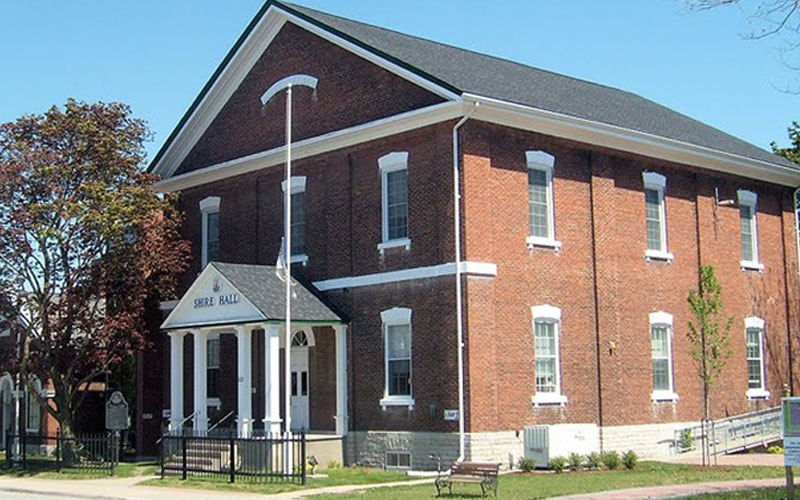County News
Tight fit


Artist’s rendering of townhomes planned near Wellington’s water tower.
Council allows plan to increase density for affordable units
Anew housing development is one step closer to being created as a planning committee of council has approved the developer’s application to nearly double the density on an acre of land-locked property in Wellington.
The application for an exemption from the zoning bylaw, which currently permits 25 units per hectare, will allow the developer to build 12 new units in a pair of sixplexes on the property to the east of 214 Oak Street at almost double the current permitted density—43 units per hectare.
The reason for this, according to the developer, is to make affordable housing units, one of council’s major goals.
The plan is not without controversy. It appeared at a planning meeting in January with the same request to increase density. Both the developer and County staff pointed to Wellington’s secondary plan, which states increases in density should be permitted for plans that would benefit the community.
But neighbours of the development turned out at that meeting to voice their objections, ranging from increased traffic on a tiny street adjacent to CML Snider school to complaints about low income tenants being crammed into a property surrounded by backyards.
Council, too, had concerns. The developer is going to request that all planning fees, including development and connection charges for the project be waived. While council still has the opportunity to deny this request, they did voice their objections.
The decision in January was deferred until a public meeting could be held to speak to the public about the development. That meeting took place at the end of March, with some of the complaints addressed. Second floor balconies were moved to the front of the buildings, facing the parking lot instead of neighbouring backyards. The design was changed to a faux-Victorian style and privacy fences were added to the plan for neighbours.
Neighbours were not satisfied, and returned to the planning meeting last week to repeat their dissent. Barbara Barrett, who owns two multi-unit buildings on Niles Street, was one of five members of the public who spoke out against the development. She said the space was insufficient and brought a petition with over 100 signatures requesting council turn down the application.
Wellington councillor Jim Dunlop hesitantly supported the units but disagreed with the discounts the developer is asking for. He also pointed out the village has more appropriate locations that can be used to develop affordable housing, like the old Dukedome on Niles Street, which has sat empty since it was replaced by the community centre on Belleville Road.
Councillors Lenny Epstein and Bill Roberts supported the application without reservation. Affordable housing is a priority, and that is what the developer was offering.
Other councillors agreed with residents’ reservations. Councillor Dianne O’Brien cited safety concerns for the dead-end property as a reason not to support the application, while councillors David Harrison and Barry Turpin said they felt the change in density was too high.
But councillor Kevin Gale reminded them that the fire chief had given his blessing to the project, and that Wellington’s secondary plan allowed for the increase. If council denied the project, it could mean a costly appeal to the Ontario Municipal Board.
The recommendation to approve the application was carried. Residents left upset, feeling they had come to protest a done deal. But nothing is done yet.
The developer has much more work to do with the County’s planning staff. A harder task will be persuading council it should waive tens of thousands of dollars in fees.
The County has said it would like a third of all new housing to be affordable. With low vacancy rates and soaring real estate prices, the municipality is falling short of that target. Developer Hugh Davidson wonders why the people who support affordable housing were not at the meetings to speak in support of his company’s project.
“How do I get people from the community to come out and support affordable housing?” asked Davidson. “Why don’t people who support affordable housing come out to the planning meeting and talk to individuals that are focused on their perspective?”

Comments (0)